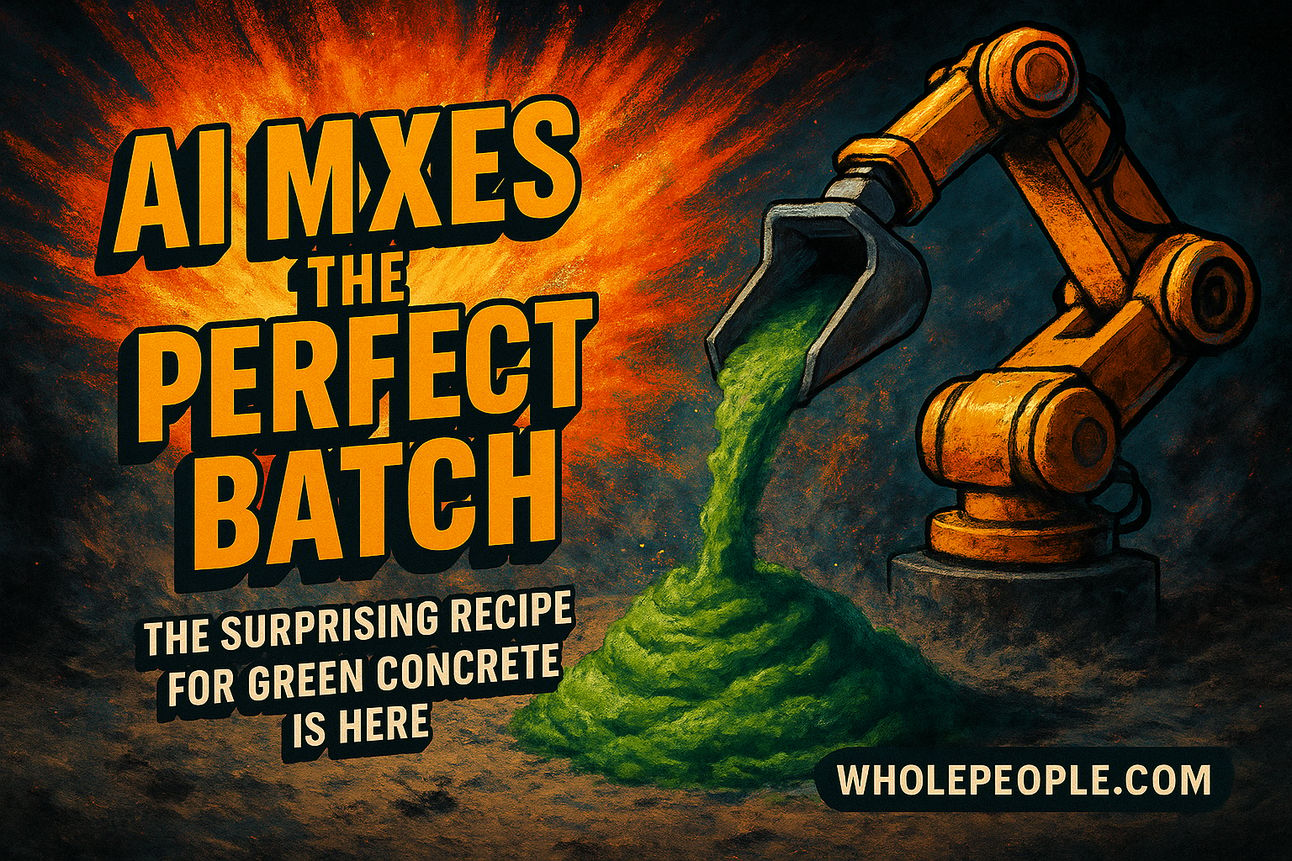Concrete is the most-used material on Earth after water—and one of the dirtiest. Cement production alone causes more than 7% of global CO₂ emissions. But scientists have just cooked up a breakthrough: an AI-discovered blend of green concrete ingredients that performs just as well—without the heavy carbon footprint.
And the best part? It’s made from stuff we already throw away.
What the AI Discovered
In a new study, researchers from MIT and the Concrete Sustainability Hub used machine learning to sift through over 1,000 combinations of waste materials—like fly ash and blast furnace slag—seeking a mix that was strong, durable, and eco-friendly.
The AI found a “Goldilocks zone”: a precise proportion of calcined clay, limestone, and discarded industrial byproducts that reduces emissions by more than 50% without sacrificing strength or workability.
It’s like giving concrete a brain—and a conscience.
Why This Is Big
🏗️ Cleaner Construction – Cement is notoriously hard to decarbonize. This AI-assisted mix offers a realistic, near-term solution that could slash emissions across roads, bridges, and buildings.
♻️ Waste Into Wonder – The recipe relies on common industrial byproducts—meaning it tackles two problems at once: emissions and waste disposal.
📦 Plug-and-Play Potential – Because the ingredients are already available, the new blend could be rapidly deployed by construction companies around the world.
🧠 Machine Learning With a Mission – This is a glimpse of AI being used not to write code or generate cat memes—but to tackle real-world climate problems.
Concrete Steps Forward
The next challenge? Scaling production, updating building codes, and convincing regulators that greener concrete doesn’t mean weaker concrete.
But with the AI model open-sourced and the material ingredients widely available, the researchers believe adoption could happen fast—especially in regions already rich in clay, ash, or slag.
Cementing the Future
With a little help from artificial intelligence, concrete just got a whole lot smarter—and greener.

